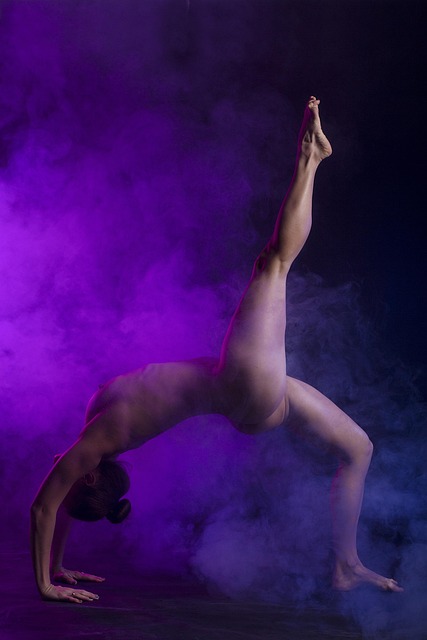# Imagining the Future: The Influence of AI Art on Contemporary Visual Culture and Aesthetic Trends
The advent of artificial intelligence (AI) has ushered in an era of unprecedented transformation across various sectors, with the art world being no exception. As AI technologies continue to evolve, they are reshaping the landscape of visual culture and influencing aesthetic trends in ways that are both profound and multifaceted. This article explores the transformative impact of AI on contemporary art, examining its implications for creativity, the artist’s role, and the future of visual culture.
## The Rise of AI-Generated Art
AI-generated art has gained significant traction in recent years, thanks in large part to advancements in machine learning and neural networks. These technologies enable machines to analyze vast datasets of existing artworks, learning patterns, styles, and techniques to create new, original pieces. Platforms like DALL-E, Midjourney, and Artbreeder have democratized art creation, allowing individuals without formal artistic training to generate compelling visuals with just a few prompts. This accessibility has led to a proliferation of AI-generated works, challenging traditional notions of authorship and creativity.
Emerging from this technological revolution is a new genre of art that blurs the boundaries between human and machine creativity. Artists are increasingly collaborating with AI systems, utilizing algorithms as tools to enhance their creative processes. This collaboration fosters a unique synergy, where the artist’s vision is augmented by the computational power of AI. Consequently, the resulting artworks often possess a distinct quality that reflects both human intent and machine learning, pushing the envelope of what is considered art.
Moreover, the aesthetic outcomes of AI-generated art are diverse and often strikingly original. By synthesizing styles from various art movements and cultural influences, AI can produce works that challenge conventional aesthetics. This has led to the emergence of new visual languages and trends that resonate with contemporary audiences, further embedding AI’s influence in the fabric of visual culture.
## Redefining the Role of the Artist
As AI becomes an integral part of the artistic process, the role of the artist is undergoing a significant transformation. Traditionally, artists have been seen as the sole creators of their work, imbued with individual vision and expression. However, the rise of AI art invites a reevaluation of this paradigm. In this new context, artists are increasingly positioned as curators and facilitators of creativity, guiding AI systems to produce works that align with their artistic intent.
This shift raises important questions about the nature of creativity itself. Can a machine be considered an artist, or does the essence of artistry lie solely within the human experience? While some argue that AI-generated art lacks the emotional depth and intentionality inherent in human-created works, others contend that the collaboration between artist and machine can yield profound and innovative results. This ongoing dialogue not only challenges our understanding of artistry but also prompts a broader reflection on the role of technology in the creative process.
Furthermore, the integration of AI into the art world has implications for the art market and the value placed on human-made versus machine-generated works. As AI art gains recognition and commercial viability, collectors and institutions must grapple with the question of authenticity and originality. The democratization of art creation through AI may lead to a reevaluation of what constitutes value in art, shifting the focus from the artist’s hand to the ideas and concepts behind the work.
## The Future of Visual Culture
Looking ahead, the influence of AI on visual culture is poised to expand even further. As AI technologies continue to advance, they will likely introduce new forms of expression and interaction that we have yet to fully comprehend. Augmented reality (AR) and virtual reality (VR) are already beginning to integrate AI-generated elements, creating immersive experiences that blur the lines between the real and the virtual. These developments open up exciting possibilities for artists to engage audiences in novel ways, fostering deeper connections between viewers and artworks.
Moreover, the proliferation of AI art may lead to a more inclusive and diverse visual culture. By lowering barriers to entry, AI can empower marginalized voices and underrepresented artists to share their stories and perspectives. This democratization of art creation has the potential to enrich the cultural landscape, fostering a more vibrant and varied artistic dialogue. As AI tools become increasingly sophisticated, they may also facilitate cross-cultural collaborations, allowing artists from different backgrounds to merge their styles and influences, creating a truly global art scene.
However, the rise of AI art also raises ethical considerations that must be addressed. Issues of copyright, ownership, and the potential for algorithmic bias are critical topics that artists, technologists, and policymakers must navigate. As AI-generated works become more prevalent, establishing clear guidelines and frameworks for their use and distribution will be essential to ensure a fair and equitable art ecosystem.
In conclusion, the influence of AI on contemporary visual culture and aesthetic trends is profound and multifaceted. As AI-generated art continues to blur the lines between human and machine creativity, it challenges our understanding of artistry and the role of the artist. Looking to the future, the potential for AI to democratize art creation and foster diverse visual cultures is immense. However, it is imperative that we engage in ongoing discussions about the ethical implications and responsibilities that accompany this technological evolution. By doing so, we can harness the power of AI to enrich our artistic landscapes while preserving the essence of human creativity.

